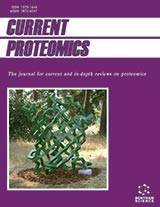Abstract
Background: Identifying dysregulated pathways from significant differential expression genes (DEGs) to infer underlying biological insights play an important role in discovering pathogenesis of diseases. However, current pathway-based methods only focus on single pathways in isolation and the analysis of the pathways crosstalk that contains DEGs could improve our understanding of alterations in biological processes.
Objective: To explore the underlying dysregulated pathways of Alzheimer's disease (AD) efficiently by the crosstalk analysis on both the significant DEGs and the pathways with high contributions.
Method: A novel signaling pathway impact analysis method is used to calculate and rank the signaling pathways of AD. Distance correlation model based on the pathways with ranking contributions is applied to calculate the crosstalk of pathways of AD.
Results: The method not only confirms the presence of known pathways associated with AD including Parkinson's disease, Vegf signaling pathway and so on but also predicts the presence of unknown pathways such as Basal cell carcinoma and Olfactory transduction pathways that are significantly associated with the onset and deterioration of AD.
Conclusion: The results provide useful supplement and basis for the biological experiments of AD pathogenesis.
Keywords: DEGs, pathway-based, crosstalk, distance correlation, Alzheimer's disease, ranking contributions.
Graphical Abstract
Current Proteomics
Title:Pathway Crosstalk Analysis based on Signaling Pathway Impact Analysis in Alzheimer's Disease
Volume: 15 Issue: 2
Author(s): Jin Deng, Wei Kong*, Xiaoyang Mou and Shuaiqun Wang
Affiliation:
- College of Information Engineering, Shanghai Maritime University, 1550 Haigang Ave., Shanghai 201306,China
Keywords: DEGs, pathway-based, crosstalk, distance correlation, Alzheimer's disease, ranking contributions.
Abstract: Background: Identifying dysregulated pathways from significant differential expression genes (DEGs) to infer underlying biological insights play an important role in discovering pathogenesis of diseases. However, current pathway-based methods only focus on single pathways in isolation and the analysis of the pathways crosstalk that contains DEGs could improve our understanding of alterations in biological processes.
Objective: To explore the underlying dysregulated pathways of Alzheimer's disease (AD) efficiently by the crosstalk analysis on both the significant DEGs and the pathways with high contributions.
Method: A novel signaling pathway impact analysis method is used to calculate and rank the signaling pathways of AD. Distance correlation model based on the pathways with ranking contributions is applied to calculate the crosstalk of pathways of AD.
Results: The method not only confirms the presence of known pathways associated with AD including Parkinson's disease, Vegf signaling pathway and so on but also predicts the presence of unknown pathways such as Basal cell carcinoma and Olfactory transduction pathways that are significantly associated with the onset and deterioration of AD.
Conclusion: The results provide useful supplement and basis for the biological experiments of AD pathogenesis.
Export Options
About this article
Cite this article as:
Deng Jin , Kong Wei *, Mou Xiaoyang and Wang Shuaiqun , Pathway Crosstalk Analysis based on Signaling Pathway Impact Analysis in Alzheimer's Disease, Current Proteomics 2018; 15 (2) . https://dx.doi.org/10.2174/1570164614666171030162949
| DOI https://dx.doi.org/10.2174/1570164614666171030162949 |
Print ISSN 1570-1646 |
| Publisher Name Bentham Science Publisher |
Online ISSN 1875-6247 |
 19
19 3
3 1
1 1
1
- Author Guidelines
- Bentham Author Support Services (BASS)
- Graphical Abstracts
- Fabricating and Stating False Information
- Research Misconduct
- Post Publication Discussions and Corrections
- Publishing Ethics and Rectitude
- Increase Visibility of Your Article
- Archiving Policies
- Peer Review Workflow
- Order Your Article Before Print
- Promote Your Article
- Manuscript Transfer Facility
- Editorial Policies
- Allegations from Whistleblowers
Related Articles
-
The Use of Intravenous Aminobisphosphonates for the Treatment of Pagets Disease of Bone
Mini-Reviews in Medicinal Chemistry Repeated Restraint and Nerve Growth Factor Administration in Male and Female Mice: Effect on Sympathetic and Cardiovascular Mediators of the Stress Response
Current Neurovascular Research Adjuvant Hormonal Therapy in Women with Early-stage Breast Cancer
Medicinal Chemistry Hypogonadotrophic Hypogonadism in Type 2 Diabetes, Obesity and the Metabolic Syndrome
Current Molecular Medicine Fish and Apoptosis: Studies in Disease and Pharmaceutical Design
Current Pharmaceutical Design The Gender Bender effect in Periodontal Immune Response
Endocrine, Metabolic & Immune Disorders - Drug Targets Mechanisms of Action of Anesthetics for the Modulation of Perioperative Thrombosis: Evidence for Immune Mechanisms from Basic and Clinical Studies
Current Pharmaceutical Design The Long Term Biological Consequences of Anorexia Nervosa
Current Nutrition & Food Science Targeted Delivery of Anti-Inflammatory Agents to Tumors
Current Pharmaceutical Design CCL2-CCR2 Signaling in Disease Pathogenesis
Endocrine, Metabolic & Immune Disorders - Drug Targets Glucocorticoid Receptor Interacting Co-regulators: Putative Candidates for Future Drug Targeting Therapy
Mini-Reviews in Medicinal Chemistry Neuroprotective Mechanisms of Oxygen and Ethanol: A Potential Combination Therapy in Stroke
Current Medicinal Chemistry Epigenetics in Metastatic Breast Cancer: Its Regulation and Implications in Diagnosis, Prognosis and Therapeutics
Current Cancer Drug Targets Metal Complexes, their Cellular Targets and Potential for Cancer Therapy
Current Pharmaceutical Design Managing Expectations in the Transition to Proof of Concept Studies
Reviews on Recent Clinical Trials The Potential and Rationale for COX-2 Inhibitors in Lung Cancer
Anti-Cancer Agents in Medicinal Chemistry Transcriptional Regulation by Promoter Targeted RNAs
Current Topics in Medicinal Chemistry Targeting Microenvironment of Melanoma and Head and Neck Cancers in Photodynamic Therapy
Current Medicinal Chemistry Promoter Structure and Transcriptional Regulation of Human β-Galactoside α2, 3-Sialyltransferase Genes
Current Drug Targets Regulation of V-ATPase Expression in Mammalian Cells
Current Protein & Peptide Science























